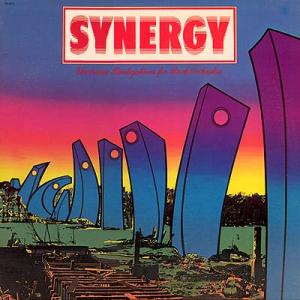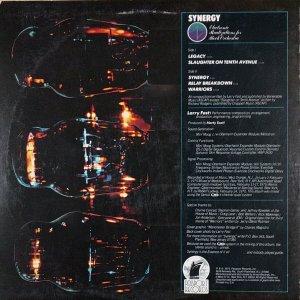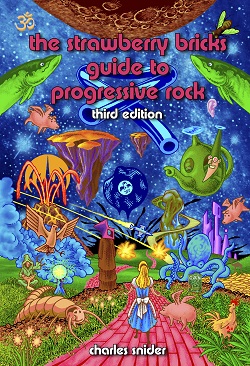Electronic Realizations For Rock Orchestra


| Tracklist | |||
| A1 | Legacy | 10:05 | |
| A2 | Slaughter On Tenth Avenue | 11:46 | |
| B1 | Synergy | 5:26 | |
| B2 | Relay Breakdown | 6:18 | |
| B3 | Warriors | 12:54 | |
| Notes: |
Written-by [Original Bassline] - Jerry Rutman |
||
Artwork By [Cover Graphic] - Charles Magistro
Composed By, Performer, Arranged By, Producer, Engineer, Programmed By - Larry Fast
Engineer [Remix] - Bob Clearmountain
Mastered By - Bob Ludwig
Photography [Back Cover] - Larry Fast
Producer - Marty Scott
Written-By - Larry Fast
Written-By - Richard Rodgers
Sound Generation:
Mini Moog c/w/Oberheim Expander Module/MellotronControl Functions:
Mini Moog Systems/ Oberheim Expander Module/ Oberheim DS-2 Digital Sequencer/ Assorted Custom Control Devices/ Galvanic Skin Response Voltage Controller / ARP-2600
Signal Processing:
Mini Moog/ Oberheim Expander Module/ 360 Systems 20/20 Frequency Shifter/ Eventide Clockworks Instant Phaser/ Eventide Clockworks Digital Delay
Recorded at House of Music, West Orange N.J., January 2-February 3, 1975.
Mixed at Mediasound, New York, N.Y. API Automated Quad (computerized) mixdown facilities, February 11-17,1975.
Mastered at Sterling Sound, New York, N.Y., February 24, 1975.
This album was mixed using the Sansui QS 4-channel quad system.
Cover graphic named "Manchester Bridge II"

